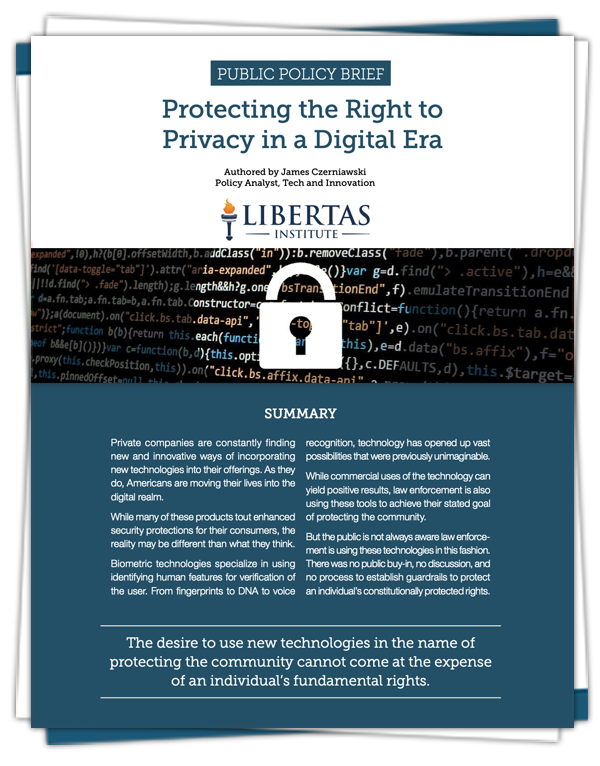Authored by James Czerniawski, Policy Analyst, Tech and Innovation
 Private companies are constantly finding new and innovative ways of incorporating new technologies into their offerings. As they do, Americans are moving their lives into the digital realm.
Private companies are constantly finding new and innovative ways of incorporating new technologies into their offerings. As they do, Americans are moving their lives into the digital realm.
While many of these products tout enhanced security protections for their consumers, the reality may be different than what they think.
Biometric technologies specialize in using identifying human features for verification of the user. From fingerprints to DNA to voice recognition, technology has opened up vast possibilities that were previously unimaginable.
While commercial uses of the technology can yield positive results, law enforcement is also using these tools to achieve their stated goal of protecting the community.
But the public is not always aware law enforcement is using these technologies in this fashion. There was no public buy-in, no discussion, and no process to establish guardrails to protect an individual’s constitutionally protected rights.




